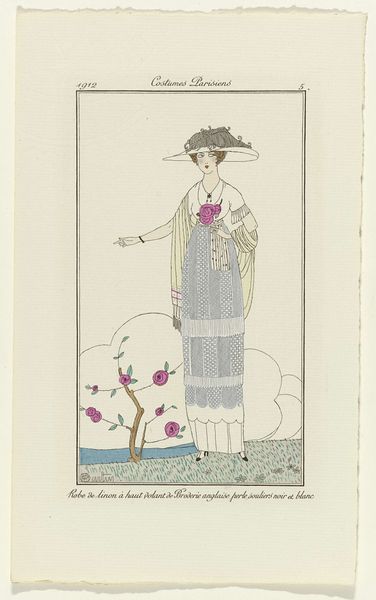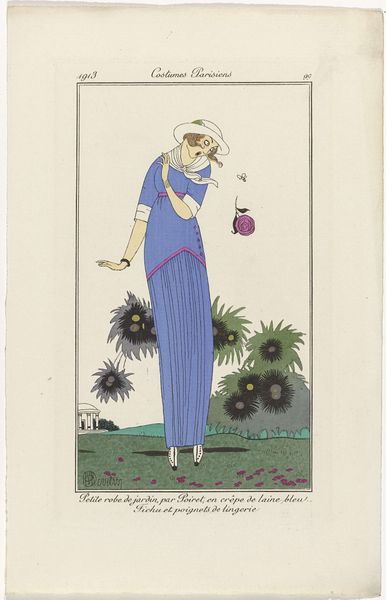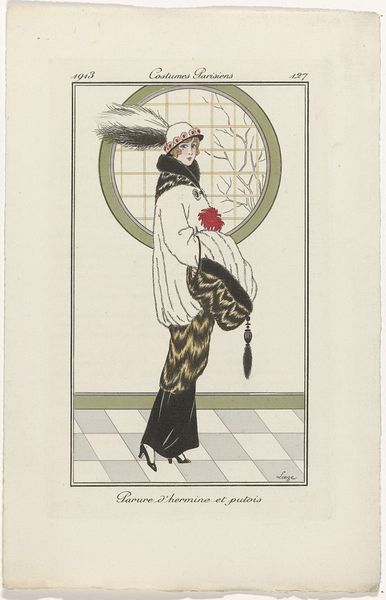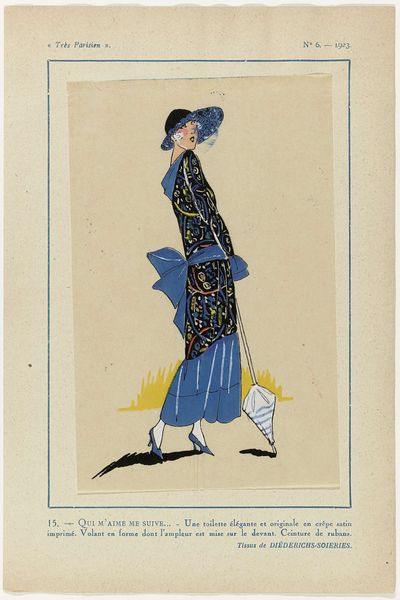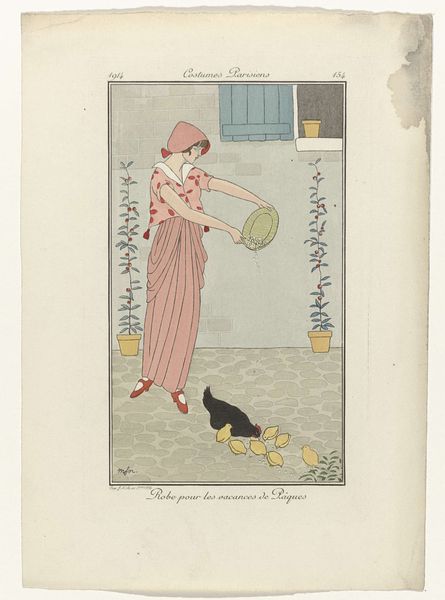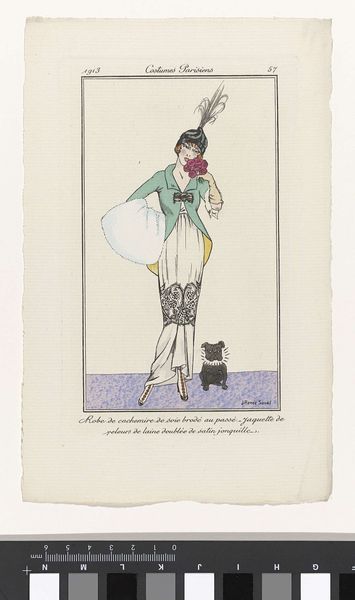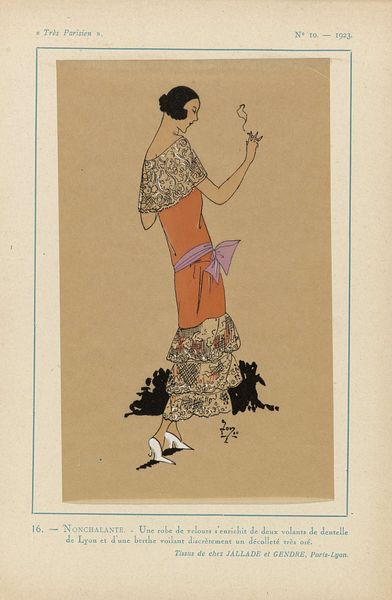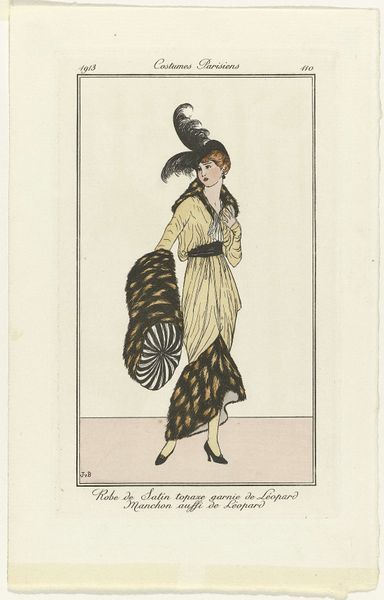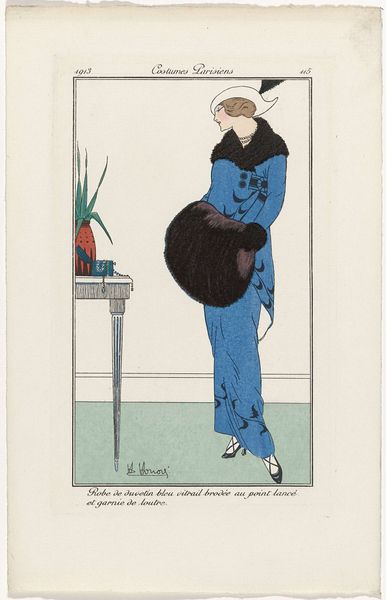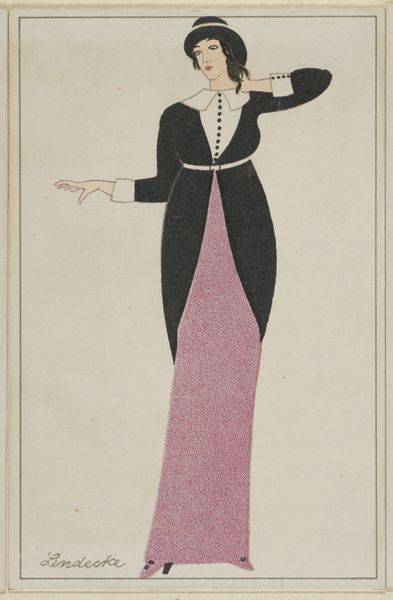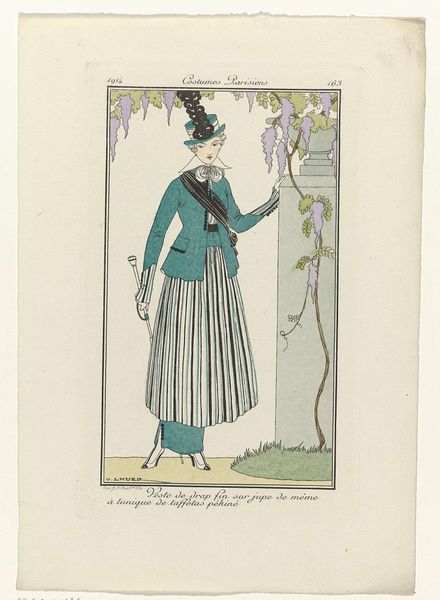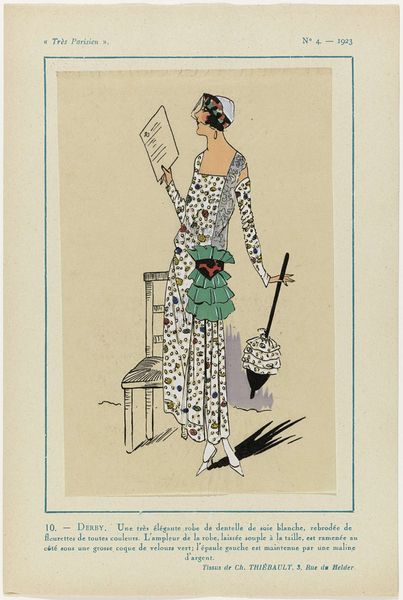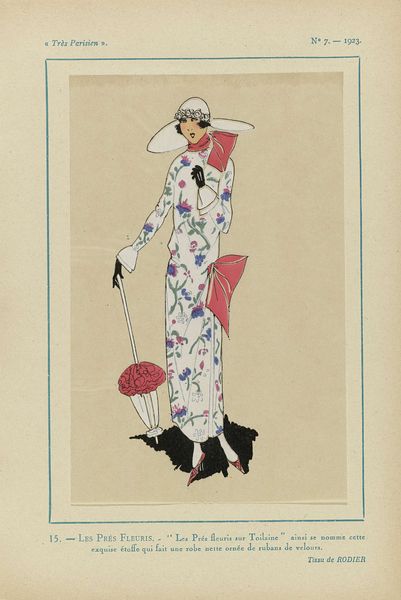
Journal des Dames et des Modes, Costumes Parisiens, 1913, No. 108 : Robe de linon (...) 1913
0:00
0:00
charlesmartin
Rijksmuseum
drawing, painting, watercolor
#
portrait
#
drawing
#
art-nouveau
#
painting
#
figuration
#
watercolor
#
historical fashion
#
intimism
#
sketchbook drawing
#
watercolour illustration
#
dress
Dimensions: height 179 mm, width 108 mm
Copyright: Rijks Museum: Open Domain
Editor: We’re looking at "Journal des Dames et des Modes, Costumes Parisiens, 1913, No. 108 : Robe de linon (...)" by Charles Martin. It's a delicate watercolour drawing, and the woman depicted seems so fragile, almost like she's a bird herself, trapped between her pet bird and an empty cage. What catches your eye about this piece? Curator: What interests me is how these fashion plates participated in constructing a particular image of women during this era. Think about it: fashion magazines weren't just about clothes; they presented aspirational lifestyles and social roles. This image, with its delicate lines and pastel colours, promotes an ideal of feminine beauty and leisure. The dress itself, described in the text as striped linen with rose trim, speaks to a certain level of affluence and access to Parisian fashion. Editor: So, it’s not just about showing off a dress, it's also reinforcing social status? Curator: Exactly! And consider the historical moment. 1913, right before World War I. There's a sense of *insouciance* here, a detachment from the realities that would soon shatter this world of leisure and elegance. These images actively cultivated an image of idealized femininity, one that often contrasted sharply with the changing roles women began to assume as war approached. Does that make sense? Editor: Yes, it does. I guess I hadn't thought about it in the context of pre-war anxieties, but now the image feels more poignant. All that fragility could also be a symbol of a world about to break. Curator: Precisely. By examining this image in its social and political context, we begin to see it as more than just a pretty picture. Editor: I see that too. It makes you wonder what happened to the women who actually wore clothes like that and how that aesthetic adapted to a different cultural environment.
Comments
No comments
Be the first to comment and join the conversation on the ultimate creative platform.
